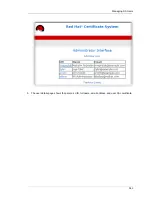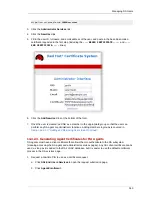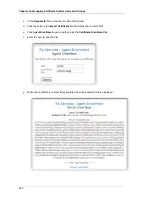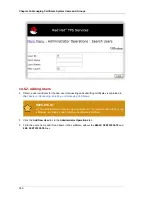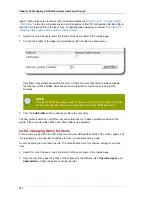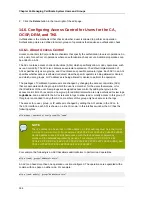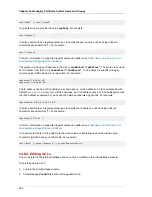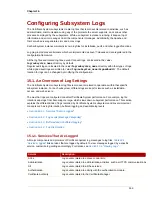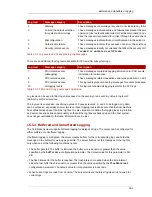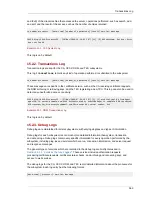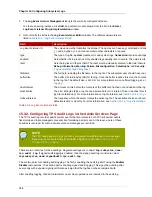
Chapter 14. Managing Certificate System Users and Groups
354
2. Click the
Delete
button in the lower right of the edit page.
14.6. Configuring Access Control for Users for the CA,
OCSP, DRM, and TKS
Authorization
is the mechanism that checks whether a user is allowed to perform an operation.
Authorization points are defined in certain groups of operations that require an authorization check.
14.6.1. About Access Control
Access control lists
(ACLs) are the mechanisms that specify the authorization to server operations. An
ACL exists for each set of operations where an authorization check occurs. Additional operations can
be added to a ACL.
The ACL contains
access control instructions
(ACIs) which specifically allow or deny operations, such
as read or modify. The ACI also contains an evaluator expression. The default implementation of
ACLs specifies only users, groups, and IP addresses as possible evaluator types. Each ACI in an ACL
specifies whether access is allowed or denied, what the specific operator is being allowed or denied,
and which users, groups, or IP addresses is being allowed or denied to perform the operation.
The privileges of Certificate System users are changed by changing the access control lists (ACL)
that are associated with the group in which the user is a member, for the users themselves, or for
the IP address of the user. New groups are assigned access control by adding that group to the
access control lists. For example, a new group for administrators who are only authorized to view logs,
LogAdmins
, can be added to the ACLs relevant to logs to allow read or modify access to this group. If
this group is not added to any other ACLs, members of this group only have access to the logs.
The access for a user, group, or IP address is changed by editing the ACI entries in the ACLs. In
the ACL interface, each ACI is shown on a line of its own. In this interface window, the ACI has the
following syntax:
allow|deny (operation) user|group|IP="name"
NOTE
The IP address can be an IPv4 or IPv6 address. An IPv4 address must be in the format
n.n.n.n
or
n.n.n.n,m.m.m.m
. For example,
128.21.39.40
or
128.21.39.40,255.255.255.00
.
An IPv6 address uses a 128-bit namespace, with the IPv6 address separated by
colons and the netmask separated by periods. For example,
0:0:0:0:0:0:13.1.68.3
,
FF01::43
,
0:0:0:0:0:0:13.1.68.3,FFFF:FFFF:FFFF:FFFF:FFFF:FFFF:255.255.255.0
, and
FF01::43,FFFF:FFFF:FFFF:FFFF:FFFF:FFFF:FF00:0000
.
For example, the following is an ACI that allows administrators to perform read operations:
allow (read) group="Administrators"
An ACI can have more than one operation or action configured. The operations are separated with a
comma with no space on either side. For example:
allow (read,modify) group="Administrators"
Содержание CERTIFICATE SYSTEM 8.0 - ADMINISTRATION
Страница 1: ...Red Hat Certificate System 8 0 Admin Guide Publication date July 22 2009 updated on March 25 2010 ...
Страница 42: ...20 ...
Страница 43: ...Part I Setting up Certificate Services ...
Страница 44: ......
Страница 190: ...168 ...
Страница 208: ...186 ...
Страница 223: ...Part II Additional Configuration to Manage CA Services ...
Страница 224: ......
Страница 256: ...234 ...
Страница 270: ...248 ...
Страница 280: ...258 ...
Страница 292: ...270 ...
Страница 293: ...Part III Managing the Subsystem Instances ...
Страница 294: ......
Страница 363: ...Managing RA Users 341 5 The user details page shows the person s UID full name email address and user SSL certificate ...
Страница 408: ...386 ...
Страница 438: ...416 ...
Страница 439: ...Part IV References ...
Страница 440: ......
Страница 503: ...Netscape Defined Certificate Extensions Reference 481 OID 2 16 840 1 113730 13 ...
Страница 504: ...482 ...
Страница 556: ...534 ...
Страница 564: ...542 ...


